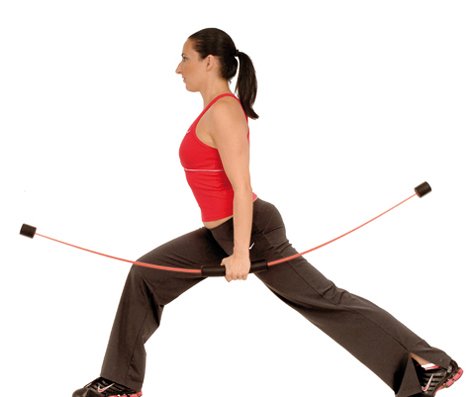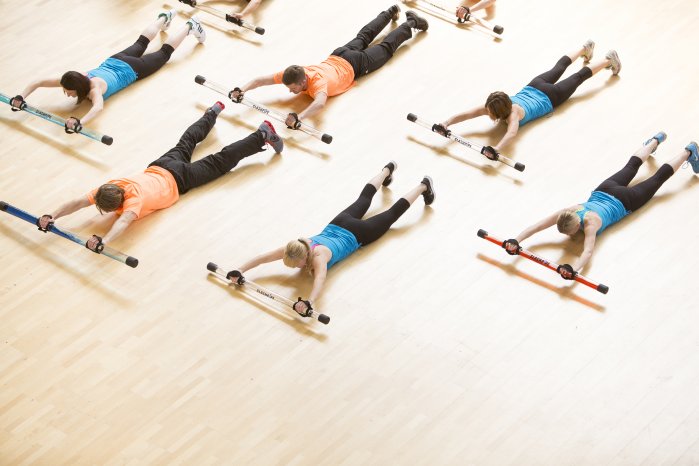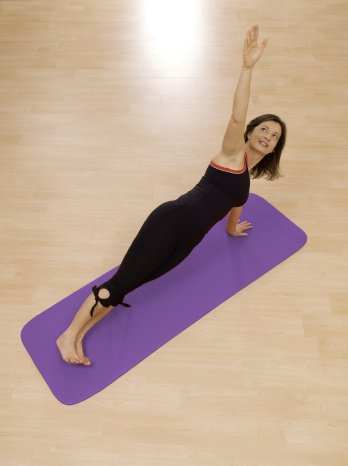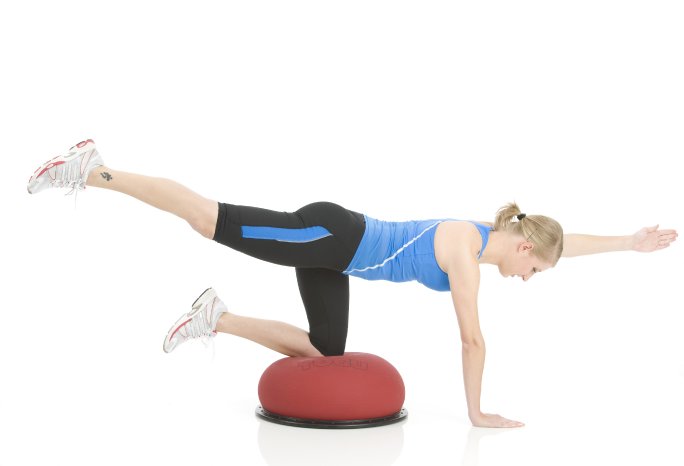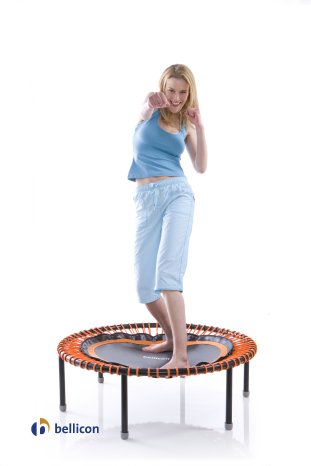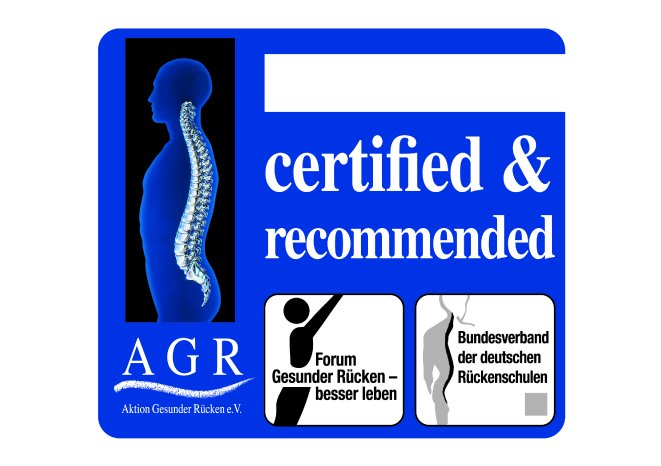Endemic backache: disorders and diseases of the musculoskeletal system are the main cause for days lost due to illness, accounting for more than 25%. Backache tops the individual diagnosis list for both men and women. This means that backache is not just a personal problem: in fact, it impacts on the economy as a whole. What do experts advise? We should do more sport and exercise to strengthen the spine. But we should think carefully about which kind of sport we choose. Competitive sport or sports such as tennis, (ice) hockey, handball, football or Alpine skiing can put a real strain on the back and on the joints. Abrupt braking, constant changes in direction and sudden sprints cause severe strains and can jolt the spine or even cause premature wear in the bones and locomotor system. With other sports such as swimming, it depends on the particular style. While backstroke strengthens the spine, breaststroke can put a strain on the cervical vertebrae. And which kind of exercise will always be good for your back? The AGR offers an overview:
Inline skating
The movements involved in inline skating not only strengthen the back and leg muscles but also improve stamina. An additional benefit is that young and old, large and small, in fact the whole family can enjoy inline skating which also gets them out into the fresh air. Experts are also aware of the health-related advantages this sport on eight wheels offers, and recommend it for patients with back problems. By the way, cross-country skiing is the ideal alternative in winter - an endurance sport that is easy to learn and good for your back.
Weight training
Well developed muscles play a crucial role in preventing backache. Specific training on the right equipment in the gym or at home is good for developing particularly important trunk muscles. But caution is required, as some exercises are not suitable for people with back problems. The snatching discipline in weight lifting for example suddenly puts a great strain on the back and compresses the joints. It is better to workout using your own bodyweight or practical aides such as highly flexible vibrating bars. The "Flexi-Bar" is a flexible fibreglass bar about 1.50 m long with a rubber weight fastened to each end. It is used for example for effective muscle training and is ideal for strengthening the back, chest and arm muscles. As soon as the bar starts vibrating, the body has to compensate for these vibrations, addressing in particular the muscles deep inside the body. Scarcely any other kind of training achieves this in-depth effect. For more information, go to www.flexi-sports.com
The Slashpipe is also ideal particularly for backache patients: this is a plastic pipe filled with water. The trick: the movement of the water is compensated by muscular tension, training inter- and intra-muscular coordination as well as strength and stamina. For more information, go to: www.slashpipe.com
Dancing
Olé! Dancing not only exercises your whole body: it is also fun and puts you in a good mood. Most kinds of dancing require good body tension and an upright posture, thus strengthening particularly the abdominal and back muscles. Regardless of whether you prefer the tango, Latin or jazz dance. Conclusion: come dancing more often!
Nordic Walking
Even people who haven't done much exercise before can improve their fitness and strengthen their back muscles with Nordic Walking. Brisk walking is more intensive training than normal walking pace, while the sticks help to protect the joints and reduce strains. The most important thing is to use the sticks properly: put the right stick to the ground together with your left heel, and vice versa. Hold the sticks close to your body and swing them forwards. Keep your hands slightly open to avoid tension in the upper body. For information and tips, please go to www.walking.de
Yoga and Pilates
Yoga and pilates are used primarily for relaxation and for body awareness. Deliberate breathing, gentle stretching and brief moments of physical effort intend to harmonise body and soul, counteract stress and keep the muscles and joints fit. Many people don't know that certain yoga exercises don't just prevent backache but are also an effective remedy. If you want to try yoga or pilates, please ensure you have a professional instructor to begin with and use a suitable mat. The mat should have good shock absorbing capacities with a non-slip surface and be easy to clean and use so that you can enjoy the exercises with suitable protection from straining your joints. Particularly beneficial mats are available e.g. from AIREX (www.my-airex.com). The YogaPilates 190 mat has been certified by AGR. It is the perfect mat offering comfort during demanding exercises by avoiding pressure pain while still being pleasantly soft.
Riding
Happiness is sitting in the saddle of a horse - in fact, horse riding also offers many advantages for your health: your body has to adapt constantly to the horse's movements. This trains all the muscles at once. Abdominal and back muscles are targeted in particular, helping to prevent pain in the long term and encouraging a good posture. Another advantage: the rhythmic tensing and relaxing of the muscles helps to relieve tension. Tip: be sure to sit upright and ride actively, otherwise your spinal column may suffer.
Coordination training
Experts agree that a healthy back needs harmonious interaction of all skeletal muscles rather than bulky muscle mass. It is particularly important for the deep abdominal and back muscles to be well activated. The corresponding motor skill is called "coordination". Deficits in coordination are often the cause of muscular problems, frequently also causing backache. In recent years, specific coordination training has received more attention from trainers and sport medicine specialists. The wide range of exercises has a positive effect on posture and stability, improving movement confidence, and in the long term can even prevent posture defects. Large round and oval fitness balls (such as the round Powerball ABS and the oval Pendel Ball, both by TOGU) constitute a wobbly surface which is ideal for coordination training as it strengths both the back and the trunk muscles. More stability and better coordination can also be achieved by training on inflated equipment which can be adjusted individually with a pump. The Jumper by TOGU for example adds a dynamic component to back exercises while the shock absorbing effect helps to protect the joints. For more information and exercises, go to www.togu.de
Trampoline
Training on a trampoline not only recalls childhood memories but is also healthy and contributes to relieving backache. However, what counts is gauging the right amount. Uninhibited bounding around as in younger years is less advisable, given the great risk of twisting your ankles or other injuries. The best and most effective approach is to train on a specially designed, highly flexible mini trampoline such as the bellicon, with swinging rather than jumping action. Specific exercises on the trampoline strengthen the leg and back muscles, while at the same time activating the cardiovascular system and improving coordination. For more information, go to www.bellicon.com
Active regeneration
One-sided strains in everyday life and also in intensive training can cause pain in the locomotor system. A BLACKROLL massage helps to release fasciae adhesions and tension in the connective tissue. Furthermore, active regeneration improves circulation in the muscles, stimulates the connective tissue and prevents chronic pain. The BLACKROLL can also be used for balance exercises and to strengthen the muscles. For more information, go to www.blackroll.de
Fitness with the AGR seal of approval
If you want to do your back some good, the best approach consists of daily, general physical activity with regular exercise and training. But it is important that the equipment you use really will be beneficial to your back and not cause any harm. The "certified & recommended" seal of approval awarded by the Campaign for Healthier Backs (AGR) is a reliable means of recognising back-friendly everyday products.
It is only awarded to products that fulfil the strict requirements stipulated by medical experts.
Exercises for a strong back
Exercises with the Flexi-Bar are ideal for strengthening the muscles in your back, chest and arms. Take the Flexi-Bar for example in your left hand, put one foot forwards and stretch both arms towards the floor. Now move the bar gently up and down to make it vibrate. After about 90 seconds, repeat with the other arm.
The Slashpipe trains coordination in particular as well as just strength and stamina. Lie on your stomach with your toes pointing upwards and lift your arms. Hold the tension for 90 seconds. Repeat the exercise.
Strengthening your back with yoga and pilates? This is how to do it: lying on the floor, push yourself up with just your left arm and left leg as support. Raise your hips until your whole body is in a straight line. Stretch your right, free arm to the ceiling. Hold this position for about 30 seconds, then change sides.
Coordination training with wobbly inflated equipment has a positive effect on posture and stability. Equipment such as the Jumper is ideal. For example, support yourself with your left knee on the jumper and your right arm on the floor. Stretch the opposite limbs out to form a straight line with your body. Hold this position for about one minute without wobbling, then repeat with the other side.
Training on the trampoline is not only fun, it is also good for a healthy back. Standing on the trampoline with one foot forwards, swing gently up and down and box your left and right arms in the arm as if an imaginary training partner were in front of you. You can also stretch your arms up or out to the side if you want to. Keep going until you get out of breath.
For active regeneration, lie on your back on the BLACKROLL with your feet set on the floor. Starting with the BLACKROLL in the lumbar region, start to roll carefully backwards and forwards and continue up to your shoulders, tensing your abdominal muscles. Repeat five to eight times.
IN BRIEF
Regular sport and exercise is good for your health and for your back. After all, a lack of exercise is the Number One risk factor for backache. This is why experts encourage us to exercise more in our everyday lives. However, some types of sport are better for spinal health than others. People suffering from backache should therefore think carefully about which kind of sport is best for them.
More information about back-friendly sporting equipment and other everyday products marked with the AGR seal of approval can be found on the internet at www.agr-ev.de or in the AGR's information package with the "Ergonomic Guide" and the "AGR MAGAZIN" patient guide at a price of €12.95 (phone +49 4284/926 99 90). For exercise videos with the certified products, go to www.youtube.com/user/dieagr
